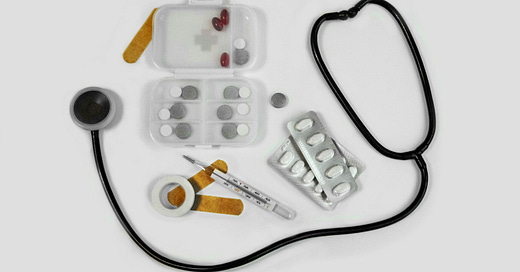A singular vowel makes each word distinct from the other. They are among the simplest of four-letter words in English . . .
Cure.
Care.
However, the choice between the two represents one of life’s toughest decisions. There are a few core basics when explaining hospice. None are easy to hear. All can make someone, and those who love that someone, unsettled, scared, angry, numb.
Entering hospice means there are six months or less to live.
A hospice doctor you’ve never met, along with nurses, social workers, and other “strangers,” will now help make your health-related decisions.
For many hospice patients, the medications given—morphine, Ativan, methadone—are the “bad” drugs. Aren’t these so-called medications addictive or for “crazy people” or only offered when pain is unbelievably unbearable? Addiction, craziness, and pain never appear on anyone’s bucket list.
And, of course, hospice means care rather than cure.
Care vs. Cure. That’s the kicker. That’s the hospice gut-check. Abandoning a hopeful four-letter word over that other one-syllable word changes . . . everything. Your life now has a clock ticking away. Strangers arrive at your door, claiming to “help” you. The medications you’re offered are never featured on the pharmaceutical commercials with happy families and well-behaved dogs and a voice-over racing through the nasty side-effects that promote the newest drug for the best cure.
Cure is good!
Will someone, somewhere please find a cure for the common cold? I’ll take that tablet, those pills, or a shot in the arm.
We want to be cured of our headache or heartache. We watch episodes of the never-ending Grey’s Anatomy or ancient reruns of Marcus Welby, MD and enjoy the soap opera relationships between Hollywood doctors. However, for most shows, by the hour’s end, the telegenic actors portraying ill patients are . . . cured! Before the closing credits, most leave the hospital, back to a vibrant life and more romantic entanglements.
Cure, please!
When I tumbled down a granite ridge on a backpack and broke my left leg, my then thirty-something body went from Mountain Man to Moaning Man. I recall the morphine hitting my system in the emergency room. Puh-lease—anything to ease the pain! Hey, the scary drug worked! And then what did I want after months of wearing a cast and arduous physical therapy?
A cure!
I worked for, and deserved, a return to normalcy.
Anyone who enters a doctor’s office and is told they have a devastating illness will probably ask a variation of the question: what are my odds at being cured?
A 90% chance?
50-50?
1 out of 10 similar cases?
Some doctors are optimistic. Some are pessimistic. Those contrasting attitudes are also present with the person on the verge of becoming a patient as they listen to the good or grim numbers. My guess, though, is that even those who deliver a message with pessimistic figures, and those that are also pessimistic and hearing the dismal statistical litany, will cling to the percentage highlighting . . .
Cure!
The possibility of a cure can mean facing painful, humbling, and debilitating treatments. There will be suffering. There will be side-effects. There will be unpredictable complications, but the “carrot” dangling in front of us is . . . cure.
If not healthy, at least alive.
If not like we once were, we’re at least able to raise our hand and be counted.
But then, one day . . .
A doctor or doctors will gaze at us from across a desk, or sit beside us in a hospital room, and announce there is no cure. No!
For certain patients, there could be the excruciating choice of continuing a mostly futile treatment, or trying a risky surgery, that might—might—prolong life by an optimistic or pessimistic number of days. But those choices don’t represent a cure. And they often come with more hours spent in a hospital room recovering rather than a living room sharing with friends and family.
So, the choice of care is the end?
No!
Entering hospice doesn’t mean “cure” is completely abandoned. Some patients have multiple health concerns. Maybe it’s a cancer that leads a doctor to recommend hospice. But that patient also has a heart-related condition. In some cases, there can still be treatments to help the problems with the heart. But nothing will be done to “cure” the cancer. In other cases—and this can easily happen—a patient leaves hospice care because she or he wants to try a new procedure for a cure. Maybe it’ll work. Maybe it won’t. But she or he will be able to return to hospice, without penalty, if and when they are again appropriate for hospice care.
As I’ve written before, palliative care adds an important consideration for the care vs. cure choices. But it needs to be “on the table” when there is time for open conversations with the medical staff and the variety of opinions in a family. Simplistically, palliative care addresses the physical, emotional, and often spiritual pain of a serious, life-threatening illness prior to doctors suggesting there are only six months or less to live.
When do you say no to cure and yes to care?
I can’t—for you—answer that question. But I hope it’s a question that is part of an ongoing conversation with doctors and friends and family. Please, talk now about both of those similar (and so different) one-syllable words. They represent choices in your life.
+++++++++++
Photo by Julia Zyablova on Unsplash
My book, A Companion for the Hospice Journey is available at Amazon.



